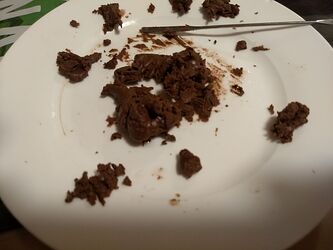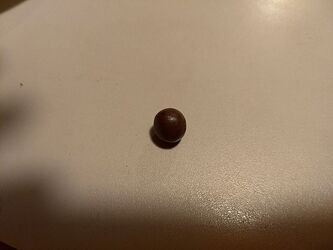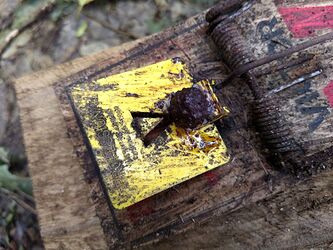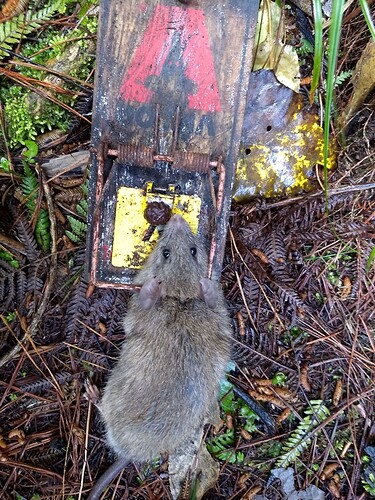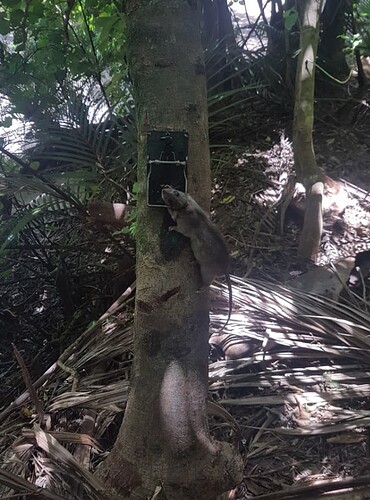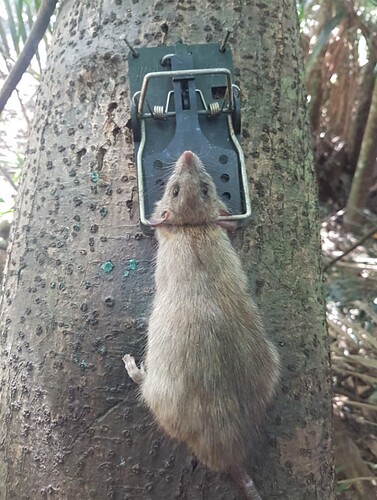This is the next chapter of my previous post on using potassium sorbate. Mouldy bait? Potassium sorbate. I will start with a description of what I have produced, then reflect on the journey getting there, for those that have any interest.
Mould-resistant lures from Nutella (aka “rat truffles”)
You will need the following ingredients:
- Nutella, or cheapest equivalent
- Potassium Sorbate (from the home-brewing store)
- Glycerol (also know as glycerin, from the pharmacist or online for bulk)
- Cocoa powder.
Method - to make around 25 lures
Add a few drops of glycerol to about two tablespoons of nutella.
Mix to form a stiff paste (add more glycerin if too sticky)
Scoop a piece of paste and roll into a ball (by hand)
Repeat 25 times (or whatever!) - doesn’t take very long. Try not to eat them.
Next step is to coat the ball with a mix of cocoa and potassium sorbate.
Mix 1 tablespoon of cocoa powder with 1/8 tsp of potassium sorbate - preferably in a pestle and mortar.
Coat the ball by rolling them in the cocoa/sorbate mix.
Put any excess powder into a plastic tub and use this to contain the balls. The reason for doing this is that the coating process will continue when the balls are rattling around.
They should look good enough to serve at your next party - but don’t - unless your mates are all rats. There is a bit too much potassium sorbate to be good for human consumption.
You can now place a ball in the lure compartment of a Victor trap (or many others). Just carefully push one into place. Put the trap in a box/tunnel as usual.
The lures will remain mostly mould-free and attractive to rats for between two to three weeks. This is true even in cold, damp, mouldy bush conditions over Winter. Unsurprisingly this assumes the balls are not stolen by mice or destroyed during a strike. Even damaged balls seem to last a bit longer than you might expect.
Some real examples:
After 15 days still looking yummy!
After 21 days not so yummy but probably edible to a rat
…and yes rats are attracted to the lures, there seems to be little difference in attractiveness between fresh nutella and the balls.
Why did I do this? (optional read)
Nutella gets wet and mouldy quite quickly - even in just a few days in damp, winter conditions. This means you either have to keep replacing the lure, or the trap will not be operational much of the time.
At first I thought I could control the mould by adding potassium sorbate (as I did with apples), however despite increasing the concentration, I have only had modest improvements in mould-resistance (more on this in another post on the AT220).
From my observations the mould only forms on the surface of the nutella - i.e. where moisture condenses. Moisture is key for the formation of mould (well documented in the food industry). No water, no mould. So inhibiting mould within nutella isn’t enough.
So what is the answer?
Well it’s tricky. What we need is a hydrophobic (water hating) coating on the nutella. I am no food scientist but I do know that cinnamon and cocoa are edible hydrophobic substances. So the purpose of coating the balls in cocoa is to encourage the moisture to bead off the ball. The addition of potassium sorbate to the coating just adds a bit of mould resistance. Having trialed the idea over the Winter, I can say with some confidence that it improves the longevity of lures.
In passing, you may notice that the mould (see photo after 21 days) typically initiates the bottom - I would speculate this is where the moisture pools. I may have an answer, but I need to trial it before sharing.
As always, happy to hear other ideas and improvement.
